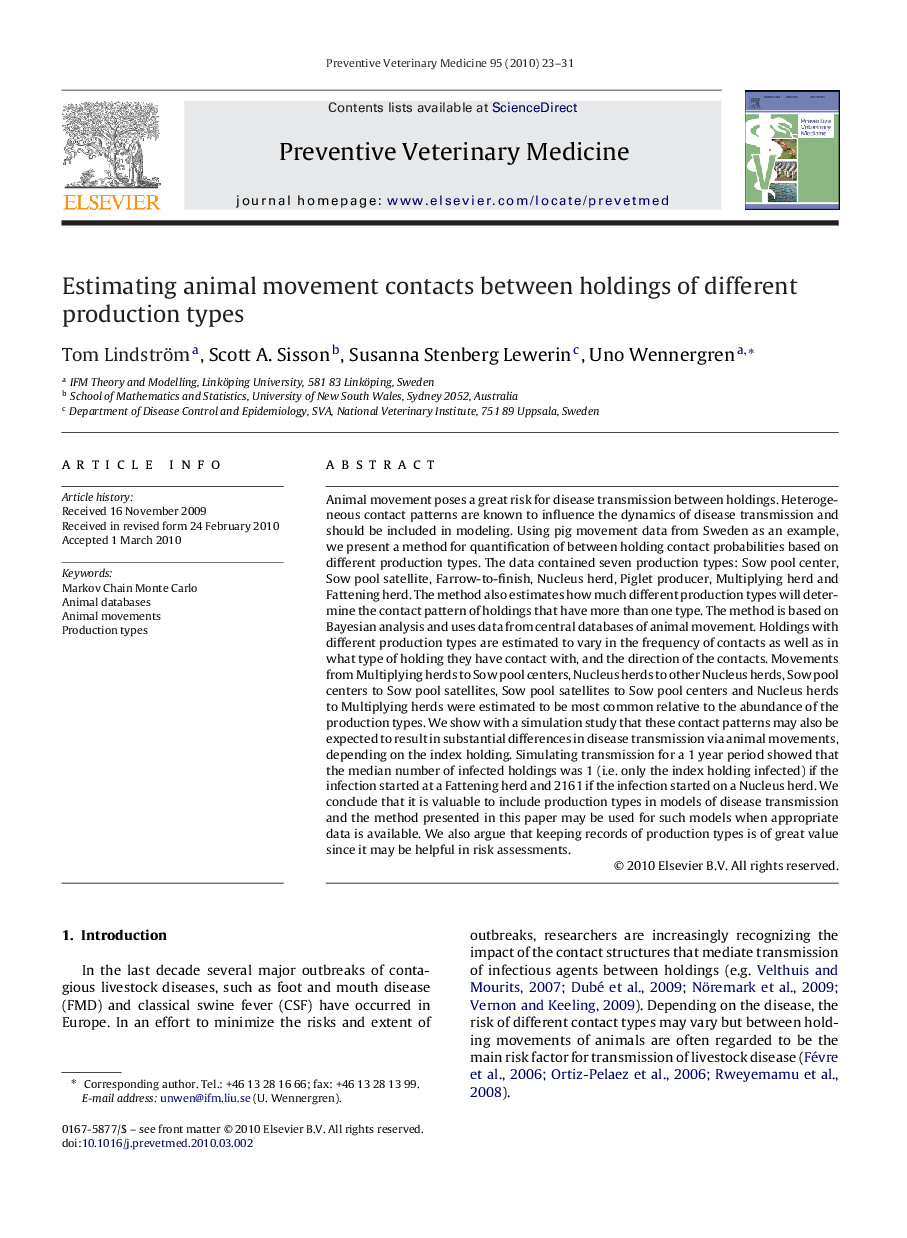| Article ID | Journal | Published Year | Pages | File Type |
|---|---|---|---|---|
| 5794209 | Preventive Veterinary Medicine | 2010 | 9 Pages |
Abstract
Animal movement poses a great risk for disease transmission between holdings. Heterogeneous contact patterns are known to influence the dynamics of disease transmission and should be included in modeling. Using pig movement data from Sweden as an example, we present a method for quantification of between holding contact probabilities based on different production types. The data contained seven production types: Sow pool center, Sow pool satellite, Farrow-to-finish, Nucleus herd, Piglet producer, Multiplying herd and Fattening herd. The method also estimates how much different production types will determine the contact pattern of holdings that have more than one type. The method is based on Bayesian analysis and uses data from central databases of animal movement. Holdings with different production types are estimated to vary in the frequency of contacts as well as in what type of holding they have contact with, and the direction of the contacts. Movements from Multiplying herds to Sow pool centers, Nucleus herds to other Nucleus herds, Sow pool centers to Sow pool satellites, Sow pool satellites to Sow pool centers and Nucleus herds to Multiplying herds were estimated to be most common relative to the abundance of the production types. We show with a simulation study that these contact patterns may also be expected to result in substantial differences in disease transmission via animal movements, depending on the index holding. Simulating transmission for a 1 year period showed that the median number of infected holdings was 1 (i.e. only the index holding infected) if the infection started at a Fattening herd and 2161 if the infection started on a Nucleus herd. We conclude that it is valuable to include production types in models of disease transmission and the method presented in this paper may be used for such models when appropriate data is available. We also argue that keeping records of production types is of great value since it may be helpful in risk assessments.
Related Topics
Life Sciences
Agricultural and Biological Sciences
Animal Science and Zoology
Authors
Tom Lindström, Scott A. Sisson, Susanna Stenberg Lewerin, Uno Wennergren,
